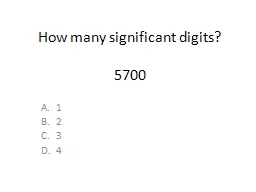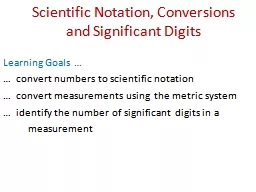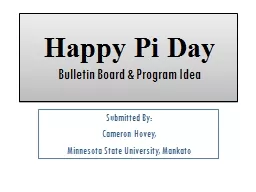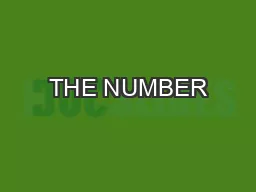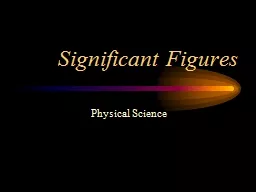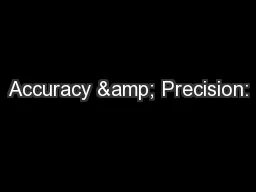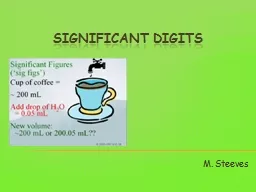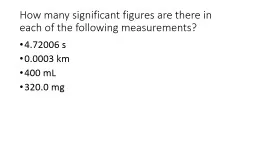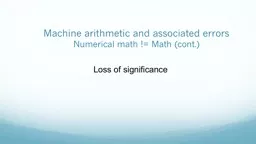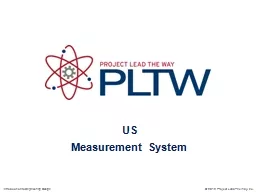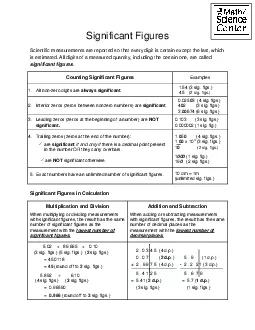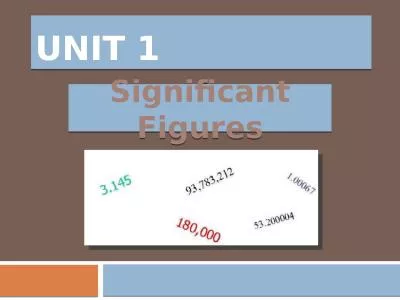PPT-How many significant digits?
Author : ellena-manuel | Published Date : 2018-03-09
5700 1 2 3 4 Multiply 8435 21103 178003805 1780 x 10 8 1780 x 10 7 17800000 Which of the following instruments would give you the most accurate measurement Round
Presentation Embed Code
Download Presentation
Download Presentation The PPT/PDF document "How many significant digits?" is the property of its rightful owner. Permission is granted to download and print the materials on this website for personal, non-commercial use only, and to display it on your personal computer provided you do not modify the materials and that you retain all copyright notices contained in the materials. By downloading content from our website, you accept the terms of this agreement.
How many significant digits?: Transcript
Download Rules Of Document
"How many significant digits?"The content belongs to its owner. You may download and print it for personal use, without modification, and keep all copyright notices. By downloading, you agree to these terms.
Related Documents

